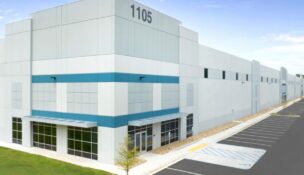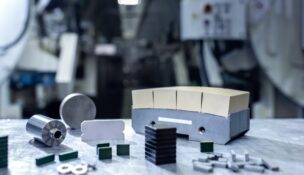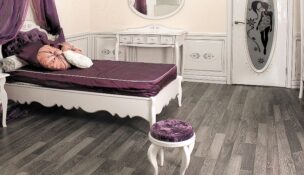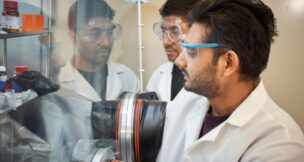Nimbleness, diversification key to companies’ survival
Melinda Waldrop //November 16, 2020//
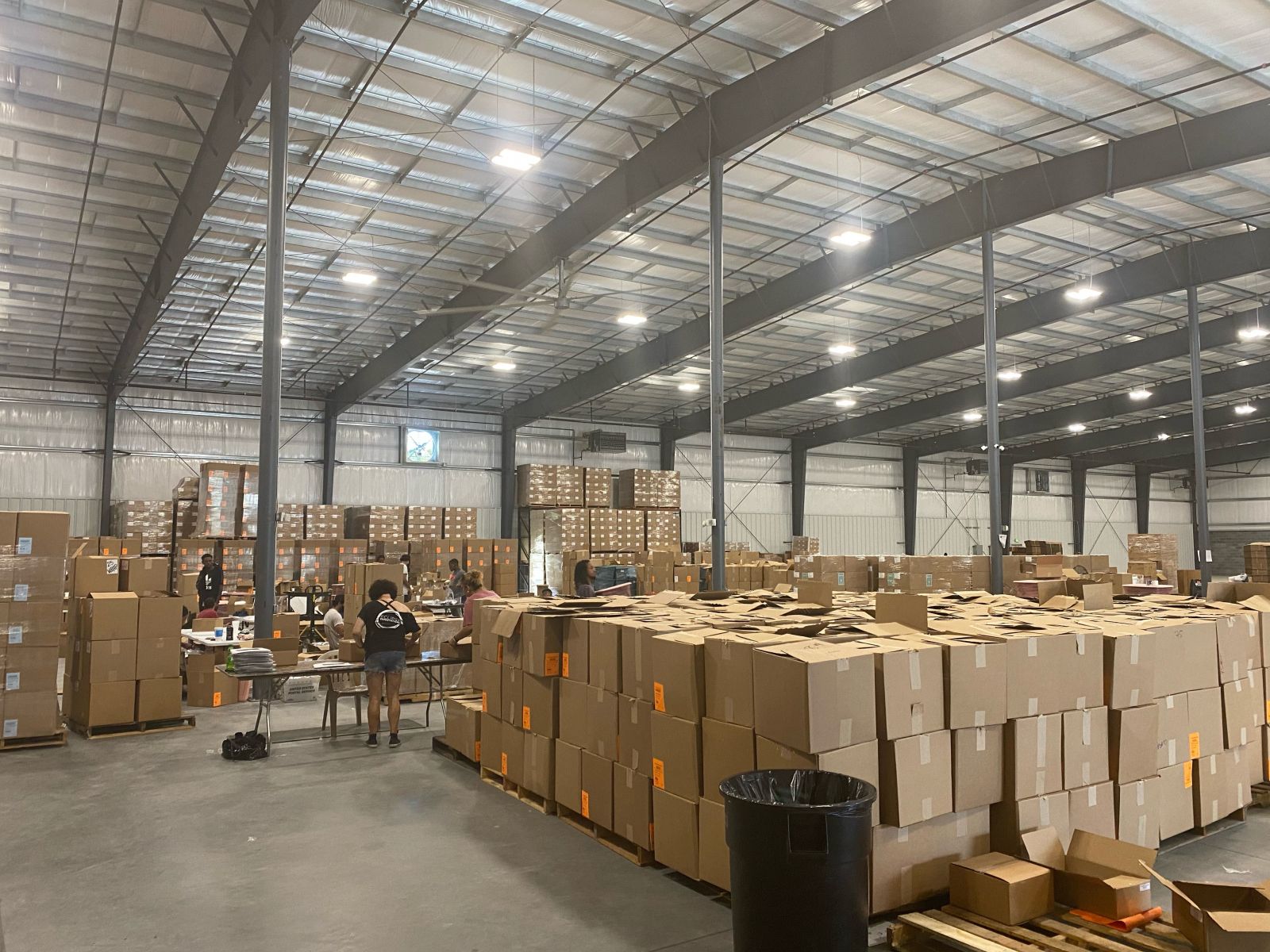
Seven months ago, John Carrington took a deep breath and pushed all his chips to the center of the table.
His Columbia company, ZVerse, was at a crossroads. Founded in 2013 as a 3D design and software solutions provider, the Shop Road outfit faced overwhelming demand for the protective face shield that had grown from an idea hatched to help local hospitals into orders multiplying into the millions.
“The first request we had was for 3,000 units, which we could solve, no problem,” Carrington said. “The next day it was 10,000, and the next day it was 50,000, and at that point we knew that 3D printing would not be able to keep up with that demand. … We had to place a bet.”
The wager involved shutting down for a few weeks to completely retool ZVerse’s production process to injection molding while scaling up from an 8,000-square-foot facility to a 30,000-square-foot one that could fill three tractor-trailers a day.
“It was really painful to do it at the time, because there was a lot of uncertainty,” said Carrington, who also found himself navigating uncharted waters of overseas shipping and distribution. “We’re going to invest all this money, and then be potentially saddled with all this investment, this product. It turned out to be the right decision to make. It allowed us to go from 1,000 units a day to 120,000 units a day in production.”
ZVerse learned on the fly one of the lessons that the COVID-19 pandemic has taught many S.C. manufacturers. In the face of faltering supply chains and other distribution snags, companies are having to diversify, increase flexibility and look for new ways to make things and get them to customers.
“A lot of companies are really starting to rethink and try to relocate or reshore. Regional consolidation, stuff like that,” said Chuck Spangler, president of the South Carolina Manufacturing Extension Partnership, a nonprofit organization that promotes innovation and industrial competitiveness. “How can they bring back regional supply chain closer to help minimize these risks for cost? … The other thing is that more and more companies during COVID-19 really learned that they didn’t have visibility down the supply chain. When you know what kind of inventory you have throughout your whole system, how fast you can produce and respond to the needs of the market, (that) is huge.”
The diversification and adaptability ZVerse demonstrated in first designing and then producing the ZShield Flex, a lightweight visor that clips around the user’s neck and which won an Innovation by Design Award from business magazine Fast Company, also have served manufacturers well in 2020, Spangler said. He’s seen that strategy pay off for other companies that have funneled resources to personal protective equipment.
“The cut-and-sew operations that we have, they’re really converted over and done phenomenal,” Spangler said. “Some of them have kept that market and are still supplying their other market and are doing really, really well. Some, maybe a third of them, went back to doing their own business and quit doing the PPE. And then you still have about a third that are out there saying hey, we need to diversify more, so if this hits again, we’re not sitting here in one or two market segments. A lot of those are small- to medium-sized businesses that just may have very few customers, and if they will do that, it will make them stronger for the future.”
Quick change
Things looked different for Carrington in March, when his concern about his employees’ physical well-being mingled with worries about looming layoffs as businesses across the state and the nation shut down in response to the new coronavirus.
“At the beginning of the year, we were an early-stage technology company, doing primarily software and design for manufacturing,” Carrington said. “And whenever the world or market inverted in March, it was pretty scary for us. Our customers were shutting down factories. I wasn’t really sure if we were going to have to start laying people off. You’re concerned about the health and safety of employees and also the health of the business. It was really scary on all fronts, like it was for everyone, when everything started going into shutdown mode.”
In mid-March, Carrington began fielding calls from local hospitals in need of personal protective equipment.
“At first it was just we were trying to just help people in our community,” he said. “Some of these folks were doctors, nurses, mothers of nurses, but then the hospital administrators. … We were trying to help those in need, and we were fortunate to be able to do that, and really felt fortunate that we could redirect our energy in such a great design.”
In April, as some restrictions on businesses began to ease, ZVerse shifted its focus to include retailers, such as restaurants and hair salons, looking for functional PPE options.
“As businesses were beginning to reopen, we were getting requests from people for the protective face shields that we designed to worn in the hospital,” Carrington said. “I had a conversation with one customer — if people are wearing these face shields in a restaurant, nobody’s going to want to eat there, because it looks like a hazmat suit, pretty much, and nobody’s going to feel comfortable doing that.
“We thought, how can we rethink or reimagine what these face shields look like and (make) something that could be worn at a W hotel or in a Chick-Fil-A or a retail environment. That’s really what spawned the ZShield Flex.”
ZVerse took feedback from customers to create the wraparound shield that flips up and down, striving for aesthetically pleasing comfort. Schools took note, as administrators in search of solutions for face-to-face instruction that could provide flexibility and be inclusive of special-needs students also expressed interest in the ZShield Flex.
“We planning to introduce it at end of May or beginning of June,” he said. “But then Gov. McMaster came to visit us in mid-May and brought along with him all the press and held a live press conference from our facility. So at that point, we officially launched. … This is the first time we actually took our own product to market and went completely end-to-end from design concept to actual product, shipping and marketing and the whole nine.”
Companies ranging from national pharmacy chains to film production companies have snapped up the shield, and Carrington’s early spring concerns faded to a distant memory by fall.
“In March, we had 18 employees. Now we’re at 84,” he said. “It’s an amazing feeling, that we’ve been able to go from complete uncertainty for the small team that we had to now being able to do something valuable during this crazy, uncertain time, and then also to provide jobs that are much-needed right now here in our community and beyond.”
New normal
Whatever a post-COVID normal looks like, Carrington foresees applications for the lessons ZVerse has learned as well as the products it is developing.
“COVID one day will go away, but post-COVID attitudes are being shaped right now, and those things will not go away,” Carrington said, pointing to demand for contactless devices in a wide range of industries. “There’s never been a time when the world needed as much innovation as it does right now, all at one time. We have several products that are in our pipeline that are not shields that will help address this post-pandemic world.
“You think about before 9-11. If you were to walk into a concert or a football game and somebody was going through your bag or doing a security check, many people would have thought that was a hassle. Today, people are actually more concerned if there isn’t security. You feel a little bit unsafe going into a crowded event. That’s going to be the case with hygiene and cleanliness.”
ZVerse’s exponential growth during the pandemic has attracted “some of the best and brightest people with other products they want us to design and bring to market,” Carrington said. “Some things are pandemic-related, some things are not. But we’re utilizing our rapid design and manufacturing process and technology to be able to bring more products to market faster than most.”
That speed will be helped by shoring up supply chains and decentralizing a manufacturing process that can become paralyzed when one faraway hub becomes inaccessible, Carrington said.
“When everything goes overseas and the capabilities don’t even exist in the U.S. to do it, it’s a problem,” he said. “Moving forward, for manufacturing, it’s going to be all about the decentralization of manufacturing and digital manufacturing, and that’s really where our expertise is. We look forward to building that here in South Carolina, specifically.”
Spangler agreed that bringing more manufacturing capabilities closer to home should be a lasting response to the pandemic.
“Other countries that were producing for the U.S., they said look, we’ve got to take care of our own countries first and then we’ll start exporting again. That was tough,” Spangler said. “I think it was a wake-up call. … You hate that anything like COVID-19 hit, but I think it did wake up a lot of businesses’ minds, going hey, we may have to rethink things. We have to pay a little more, yet we can get it domestically — that’s not a bad thing.”
Less on-site inventory can help companies be more flexible, Spangler said, while increasing automation can help reduce production costs.
“Really, what we want to do is get them to where they’re only producing what the market needs,” he said. “That’s really when we have utopia.”
The work SCMEP has done with organizations such as the S.C. Commerce Department, the S.C. Hospital Association and SCBIO in connecting PPE suppliers to customers has better-positioned the state to respond to future crises, Spangler said.
“We have setup now. We have companies identified so that if anything ever happens — hopefully we never have anything like this is the future, but if you do, we can be so much responsive now than at any time ever in the past,” he said. “We have that capacity here that we didn’t before.”
It’s crucial, Spangler said, for that momentum to continue, even when COVID-19 is no longer driving change.
“People say, ‘I don’t want to be in this situation ever again. What can I do to not have this?’ ” he said. “That’s when people really start looking at diversifying and coming up with other alternatives. … We have to be competitive for people to buy. We can’t lose focus. We can’t just go back to what we were and slip back to what we were doing. That would be our fault. We need to keep the thorn in our side and make sure that we’re doing the necessary things where we’re manufacturing more than critical needs in the United States.”
This article first appeared in the Nov. 9 print edition of the Columbia Regional Business Report.
-







